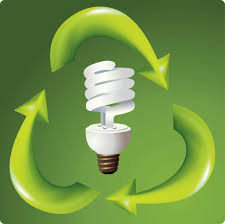None of the organisms in an ecosystem, be it a grassland, a pond or a desert, live in isolation. Each organisms exists in a number of relationship with other organisms and the non living environment. Flow of energy is the consequence of this inter relationship. Ecosystem, being typical open system, driven by the continuous input of energy from outside the system boundary.
WHAT IS ENERGY:
Energy is the capacity to do work, needed to make things move. Energy exist in many forms in nature. For example, water flowing in the stream, a cyclist uses mechanical energy while riding a cycle. Mechanical energy is of two types: Potential energy and Kinetic energy. The energy used for all life processes whether mechanical, chemical, light or heat is derived from solar energy.
FLOW OF ENERGY IN ECOSYSTEM:
As solar energy is absorbed by green plants during photosynthesis. Observations made from artificial satellites indicate that nearly 30% of total solar energy radiation is reflected by earth’s atmosphere and remaining 70% is absorbed by the earth’s atmosphere. Except this, 19% of the radiation is absorbed directly by the atmosphere and rest by earth’s surface. It is the blue and red components of the solar radiation that are strongly absorbed by the chlorophyll, the green pigment, present in vegetation. This is how energy for the ecosystem is trapped through photosynthesis.
Photosynthesis is the process in which takes place when plants convert solar energy into chemical energy and produce carbohydrates and a host of other nutrients. In photosynthesis, the chemical energy flows from producers to consumers. And thus then, chemical energy is being utilized in respiration And for the growth and development of human beings and living beings, and in this process given, a large part is lost as heat and cannot be reutilised. This whole process of inout of energy from the sun, conversion to other forms of energy and flowing back to the environment maintains life on earth.
Food provides energy and various nutrients for organisms. So the flow of energy is linked closely to the nutrient flow in it. This means, even the host of other nutrients are also transferred to the consumers. The above process continues up to the decomposer level.
There are certain important features which takes place during the flow of energy in ecosystem:
Flow is energy in the ecosystem is unidirectional. I.e the solar energy is initially being absorbed by the produces and does not revert back to the sun. And if the sun being stops itself from providing solar energy then, the ecosystem would collapse.
At each tropic level, energy content decrease progressively. As the trapped solar energy is being absorbed in metabolic activities and respiration. And the energy in flow to the ecosystem balances with the net energy outflow from the ecosystem and maintains a dynamic equilibrium state in it.
In ecosystem, energy is transferred in an orderly sequence. The first and second law of thermodynamics governed the chain of events in which the solar energy may converted into chemical energy and being lost as heat.
LAWS GOVERNING THE FLOW OF ENERGY:
The first law of thermodynamics deals with the conservation of energy and states that the energy cannot be created or destroyed but can only change from one form to another. Example, the energy of visible light is absorbed by green plants through photosynthesis, changed into chemical energy, stored in glucose molecules and then almost all living organisms including plants consume glucose in respiration and stored chemical energy for their metabolic activity.
The second law of thermodynamics states that in energy transformations, some energy is always lost in the form of heat that is thereafter unavailable to do further useful work.
For example, when coal is burnt in a boiler to produce steam, some energy creates the steam but some part is dispersed as heat to the surrounding air. Thus energy transformations in physical as well as biological worlds is less than one hundred percent efficient. Moreover, in nature, more complex form of energy involves grazing and detritus food chains.
The flow of energy in the ecosystem is the fundamental process which can be easily qualified, if the energy input to the ecosystem and its transformations from the one tropic level to the another can be expressed in terms of calories. The study of ecosystem energetic gives a sound basis for energy budget at individual, population and ecosystem level.
At higher tropic levels, measurement of energy flow involves determination of energy quality for every species population in each tropic level, and then addition of these specific figures to give the overall energy flow for the tropic level. The weight, food intake, respiration of few individuals are measured and their assimilation and production rates are calculated.

As, so energy enters in the ecosystem as free solar energy and leaves it as heat, having undergone changes from a concentrated to a dispersed state.
Hence, at the end, what we should always remember is the fact that Human intervention in natural ecosystems is growing significantly. Human impact on the pattern and quantum of energy flow has changed significantly because of the considerable amount of fossil fuels used by the urban, industrial and rural communities.



Leave a Reply